
Uncovering the Timeless Essence of London Stone
Explore the captivating London Stone, a historical landmark that offers a glimpse into the rich tapestry of London's ancient past.
Discover the London Stone, a remarkable historical landmark nestled in the heart of the city. This ancient relic, shrouded in mystery, offers visitors a glimpse into London's rich past, making it a must-visit for history enthusiasts and curious travelers alike.
A brief summary to London Stone (remaining part)
- 111 Cannon St, London, EC4N 5AR, GB
- Visit website
Local tips
- Visit during off-peak hours for a quieter experience and better photo opportunities.
- Combine your visit with a walking tour of nearby historical sites.
- Look for informative plaques nearby to learn more about the stone's history.
- Don't forget to bring a camera to capture this unique historical landmark!
Getting There
-
Walking
From Windsor town center, head towards Windsor & Eton Central Station. Take the train to London Paddington, which takes about 30 minutes. Once at Paddington, follow the signs to the London Underground and take the Circle or District Line to Monument Station. After exiting Monument Station, walk east on Fish Street Hill, then turn left onto Cannon Street. Continue walking for a few minutes until you reach 111 Cannon Street, where the London Stone is located.
-
Train
Start at Windsor & Eton Central Station. Purchase a ticket to London Paddington. Board a train to London, which will take approximately 30 minutes. Upon arrival at Paddington Station, follow the signs to the Underground and take the Circle or District Line to Monument Station. Upon exiting Monument Station, walk east on Fish Street Hill, turn left onto Cannon Street, and continue until you arrive at 111 Cannon Street, the location of the London Stone.
-
Bus
From Windsor town center, find the nearest bus stop and catch the Green Line 702 bus towards London. The journey will take around 1 hour. Get off at the stop near London Bridge. From there, walk to Monument Station (approximately 10 minutes). Take the Circle or District Line to Cannon Street. Upon exiting the station, walk a short distance to 111 Cannon Street, where the London Stone is situated.
Discover more about London Stone (remaining part)
Iconic landmarks you can’t miss
113 Cannon St
0.0 km
Explore the architectural beauty of 113 Cannon Street, where history meets modernity in the heart of London's financial district.
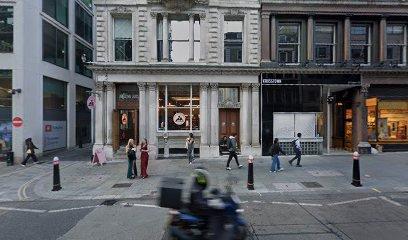
Historic England
0.1 km
Discover the rich tapestry of England's history at Historic England, a key organization dedicated to preserving the nation’s architectural treasures.

City of London
0.1 km
Experience the vibrant culture, rich history, and iconic landmarks of London, a global city that captivates every traveler.

Lombard St
0.2 km
Explore Lombard Street, London's iconic crooked street adorned with beautiful flowers and rich history, a must-visit for every traveler.
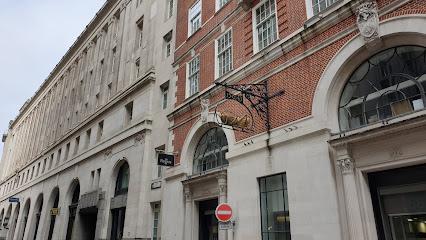
Fish St Hill
0.3 km
Discover the historic charm and vibrant culture of Fish St Hill in London, a must-visit destination for tourists exploring the capital's rich heritage.
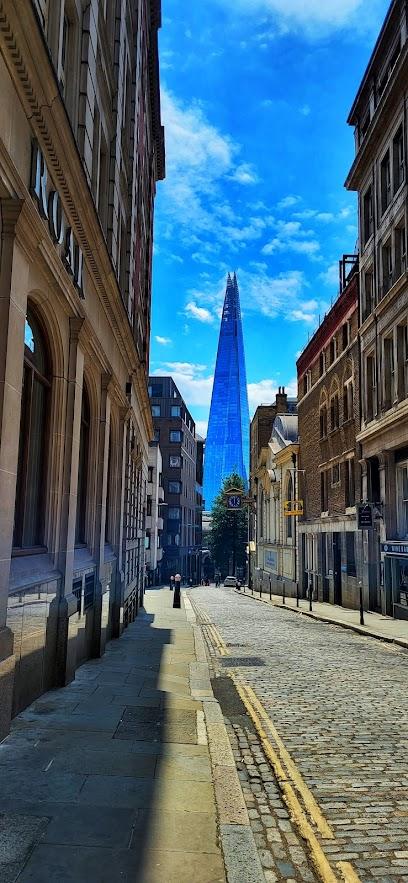
Pudding Ln
0.3 km
Discover the historical heart of London at Pudding Lane, where the Great Fire ignited and the story of resilience began.

Threadneedle St & Royal Exchange
0.3 km
Discover the vibrant crossroads of Threadneedle Street and Royal Exchange, where history meets modern luxury in the heart of London’s financial district.
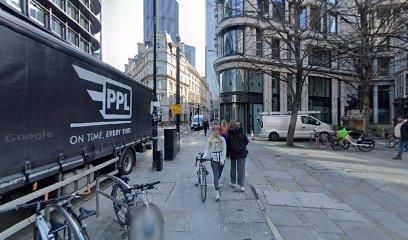
Threadneedle St
0.4 km
Explore Threadneedle Street in London: a vibrant blend of history, modern architecture, and lively atmosphere, perfect for tourists seeking urban adventure.
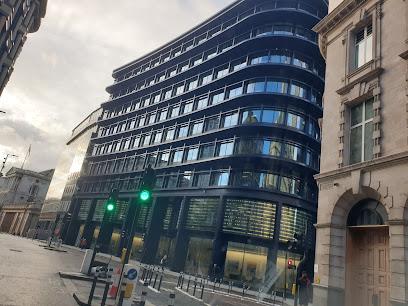
Watling St
0.4 km
Explore the historic Watling Street, a charming thoroughfare in London that blends ancient history with vibrant city life, perfect for an unforgettable stroll.
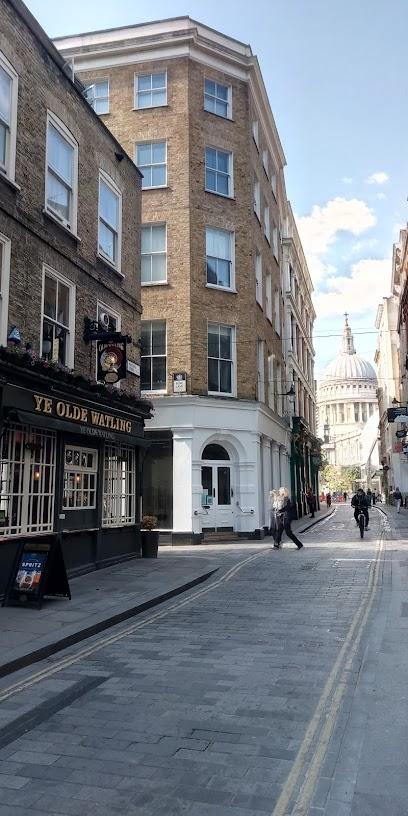
20 Fenchurch St
0.4 km
Discover the stunning Walkie Talkie at 20 Fenchurch Street, a pinnacle of modern architecture and breathtaking views in London.
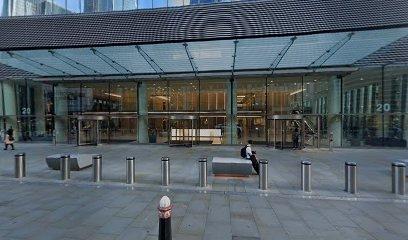
Southwark Bridge
0.4 km
Discover breathtaking views and rich history at Southwark Bridge, an architectural gem spanning the River Thames in London's vibrant landscape.

Queen Victoria St
0.5 km
Discover the vibrant history and culture of London along Queen Victoria Street, a must-visit destination featuring iconic landmarks and delightful eateries.
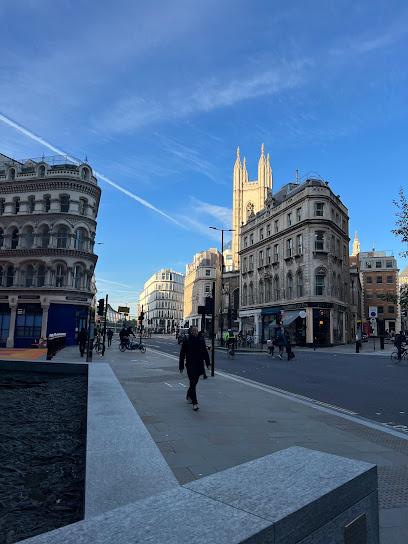
Billingsgate Roman House & Baths
0.5 km
Explore the rich Roman heritage at Billingsgate Roman House & Baths, a fascinating museum revealing ancient life in the heart of London.

Custom House
0.5 km
Discover the historic Custom House in London, a landmark of architectural beauty and maritime heritage along the River Thames.

Guildhall Library
0.5 km
Discover London's rich history at Guildhall Library, a treasure trove of knowledge with rare manuscripts and engaging exhibitions for all.
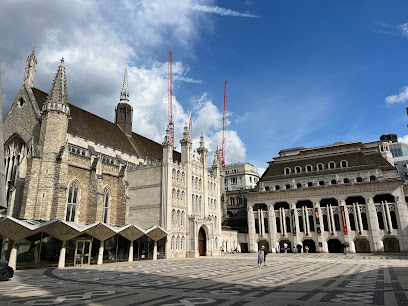
Unmissable attractions to see
St Mary Abchurch
0.1 km
Discover the tranquility of St Mary Abchurch, a historic church designed by Sir Christopher Wren in London's financial district, perfect for a peaceful retreat.

London Mithraeum Bloomberg SPACE
0.1 km
Uncover the ancient mysteries of London at the London Mithraeum Bloomberg SPACE, a captivating museum that combines history, culture, and immersive experiences.
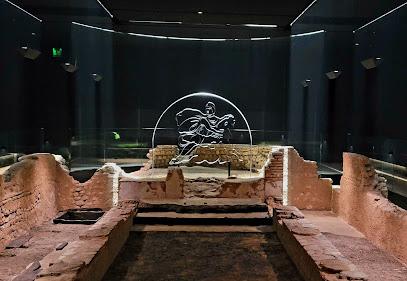
Forgotten Streams. Bloomberg Arcade
0.1 km
Discover the Forgotten Streams sculpture at Bloomberg Arcade, a serene oasis in the heart of London celebrating the city’s hidden waterways.

St Stephen Walbrook
0.1 km
Discover the architectural beauty and tranquil ambiance of St Stephen Walbrook, a historic Anglican church in the heart of London.

Mansion House
0.2 km
Explore the grandeur of Mansion House, the official residence of the Lord Mayor of London, where history and governance meet in stunning architecture.
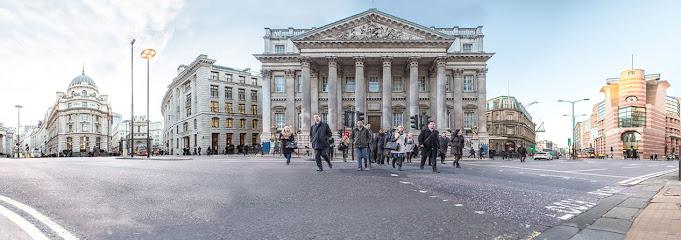
IMPRINT Church London: St Mary Woolnoth
0.2 km
Discover the serene beauty of IMPRINT Church London, a historical Anglican landmark blending spirituality and community in the heart of the city.

IMPRINT Church London: St Clement Eastcheap
0.2 km
Discover the spiritual haven of IMPRINT Church London at St Clement Eastcheap, where architectural beauty meets community fellowship.
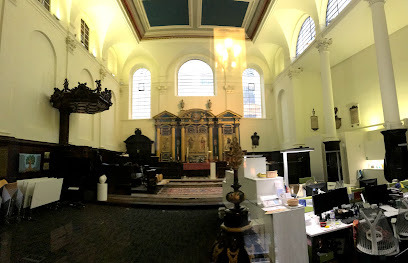
Bloomberg Arcade
0.2 km
Explore Bloomberg Arcade in London: A vibrant hub of dining, shopping, and art nestled in a stunning modern architectural setting.

St Michael's Church : Paternoster Royal
0.2 km
Explore St. Michael's Church, a serene Anglican gem in London, rich in history and stunning architecture, perfect for peaceful reflection.
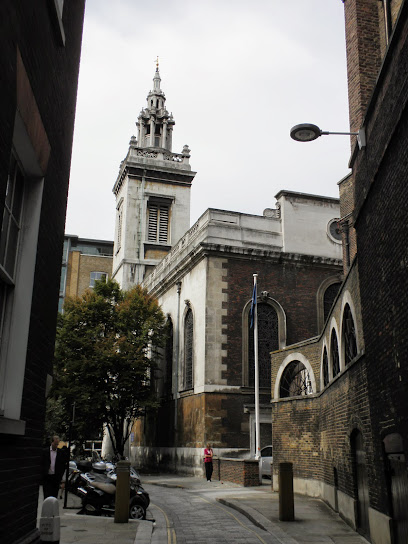
Statue of James Henry Greathead
0.2 km
Explore the Statue of James Henry Greathead, a historic tribute in London celebrating engineering brilliance amid the vibrant Cornhill district.
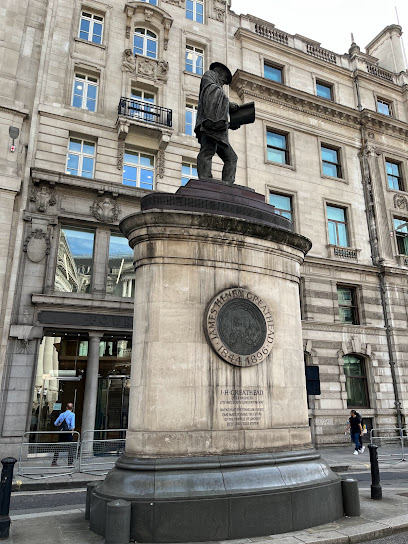
Equestrian Statue of the Duke of Wellington
0.2 km
Explore the Equestrian Statue of the Duke of Wellington, a stunning historical landmark in the heart of London, celebrating Britain's military heritage.
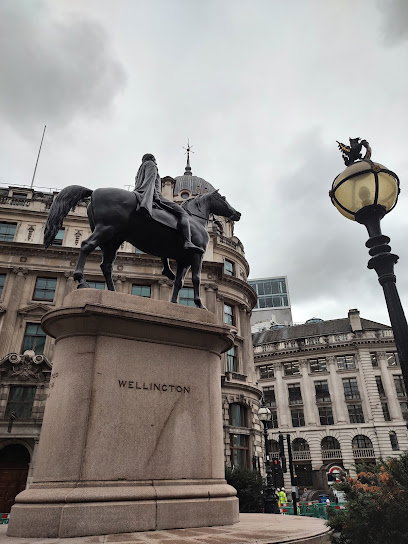
Change Alley
0.2 km
Explore Change Alley in London, a charming passageway filled with history, unique shops, and a tranquil atmosphere amidst the city's hustle.

London Troops War Memorial
0.2 km
Explore the London Troops War Memorial, a significant historical landmark honoring the bravery of British soldiers with stunning architecture and reflective ambiance.
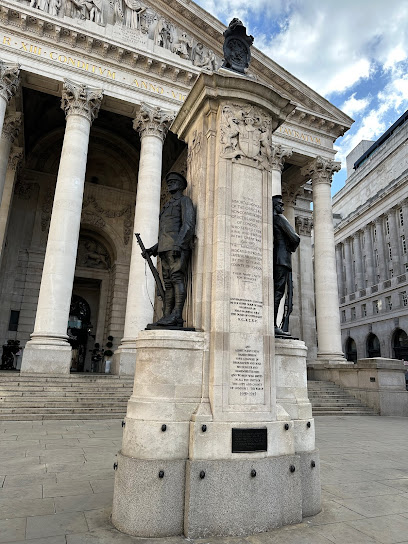
The Royal Exchange
0.3 km
Discover The Royal Exchange, London's premier shopping destination blending luxury, history, and delicious dining in a stunning architectural setting.
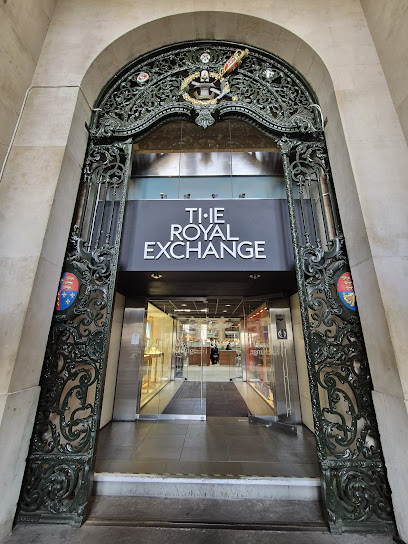
Bank of England
0.3 km
Explore the Bank of England: a historical landmark revealing the secrets of Britain's financial system and its impressive architectural beauty.
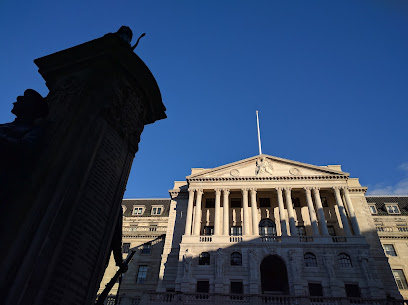
Essential places to dine
14 Hills
0.6 km
Dine amidst breathtaking views of London’s skyline at 14 Hills – where modern European cuisine meets elegance.

La Dame de Pic London
0.8 km
Experience culinary artistry at La Dame de Pic London - where French elegance meets innovative gastronomy in an unforgettable setting.

Marugame Udon Middlesex Street
1.1 km
Experience authentic Japanese udon noodles at Marugame Udon Middlesex Street – where tradition meets modern taste in London's vibrant culinary scene.

Barcelona Tapas Bar & Restaurant
1.1 km
Experience authentic Spanish cuisine at Barcelona Tapas Bar & Restaurant in London - a vibrant spot for tapas lovers!
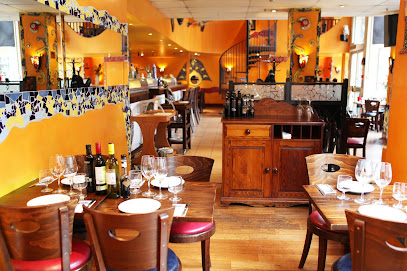
Mattarello Chiodo Bolognese Restaurant
1.1 km
Savor authentic Italian cuisine at Mattarello Chiodo Bolognese in London – where every dish tells a story.

Restaurant Story
1.3 km
Experience the pinnacle of fine dining at Restaurant Story in London, where each dish narrates a unique tale of British culinary heritage.

Sea Containers Restaurant
1.3 km
Discover exquisite modern British cuisine at Sea Containers Restaurant along the Thames River—an unforgettable dining experience in London.

St. John
1.3 km
Discover the essence of modern British cuisine at St. John - where tradition meets innovation in every delicious bite.
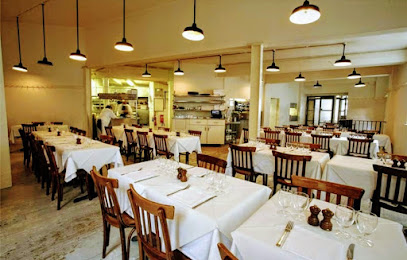
Dans le Noir ? London Restaurant
1.4 km
Experience dining like never before at Dans le Noir ? London - where taste meets adventure in complete darkness.
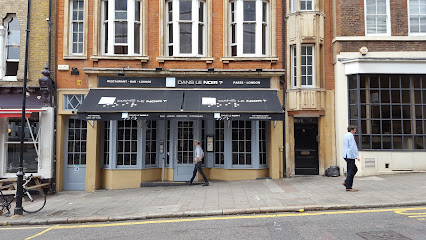
Paradiso Burger & Cocktail Bar Southbank
1.5 km
Savor gourmet burgers and crafted cocktails at Paradiso Burger & Cocktail Bar on London's vibrant Southbank.

Lyle's
1.6 km
Experience contemporary British fine dining at Lyle's in Shoreditch, where seasonal ingredients meet innovative culinary artistry.

Ikoyi Restaurant
1.8 km
Experience the fusion of British and West African cuisine at Ikoyi Restaurant, a top fine dining destination in London's Temple area.

Nest Restaurant Old Street
1.9 km
Discover the exquisite blend of European flavors at Nest Restaurant in London's Old Street—where culinary creativity meets comfort.

The Clove Club
1.9 km
Experience exquisite modern British cuisine at The Clove Club in Shoreditch – where culinary artistry meets vibrant London flavors.
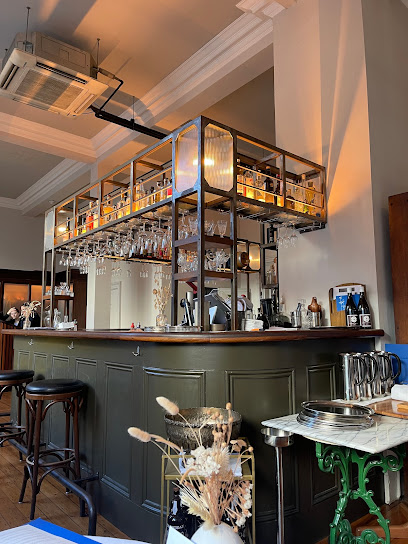
Brasserie Blanc - Southbank
1.9 km
Experience authentic French cuisine at Brasserie Blanc - Southbank, where delightful flavors meet stunning riverside views in London.

Markets, malls and hidden boutiques
Traders Gate
0.8 km
Explore Traders Gate, a family-run gift shop in London offering unique souvenirs and local crafts, perfect for every tourist's memento.
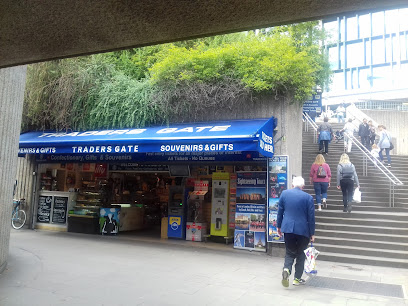
Tower of London Shop
0.8 km
Discover unique gifts and royal memorabilia at the enchanting Tower of London Shop, an essential stop for every visitor to this historic site.
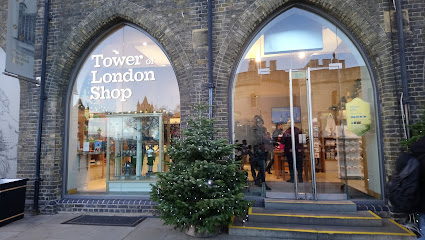
Barbican Shop
1.0 km
Explore the Barbican Shop for unique gifts, art books, and handmade treasures reflecting London's vibrant culture.

Bankside Arches Boutique
1.0 km
Explore Bankside Arches Boutique for unique gifts, aromatherapy products, and handcrafted jewelry in the heart of London's Blackfriars Station.

Middlesex Textiles
1.0 km
Explore the vibrant world of African textiles at Middlesex Textiles, London’s premier destination for unique fabrics and cultural heritage.

Tower Bridge - Engine Rooms and Official Gift Shop
1.2 km
Explore the fascinating history of Tower Bridge at the Engine Rooms and shop for unique gifts at the Official Gift Shop.

SUCK UK Alternative Gifts (OXO Tower)
1.3 km
Explore SUCK UK Alternative Gifts in the iconic Oxo Tower, a treasure trove of quirky homewares and innovative gifts perfect for every occasion.

Brand Academy Independent Gift Shop
1.3 km
Explore the Brand Academy Independent Gift Shop for unique London souvenirs and local artisanal products in the iconic Oxo Tower Wharf.

j-me original design ltd
1.4 km
Explore j-me original design ltd, a unique gift shop in London offering innovative and stylish products perfect for souvenirs and thoughtful presents.

Sugar And Style
1.5 km
Explore Sugar And Style, a charming fashion accessories shop in London's Gabriel's Wharf, offering unique pieces to complement your style.

DPUS Designer Outlet
1.5 km
Explore unbeatable designer fashion deals at DPUS Designer Outlet in London, where style meets affordability for the ultimate shopping experience.

Brick Lane Souvenirs
1.7 km
Explore Brick Lane Souvenirs for unique gifts and clothing that capture the essence of London, perfect for tourists and locals alike.
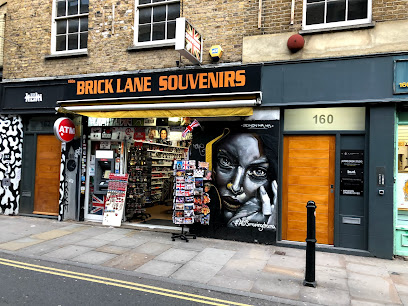
The Store X
1.8 km
Discover luxury fashion at The Store X in London, where elegance meets contemporary style in a chic shopping environment.

Luna & Curious
1.9 km
Discover unique gifts, books, and children's clothing at Luna & Curious, a charming independent shop in the heart of London.
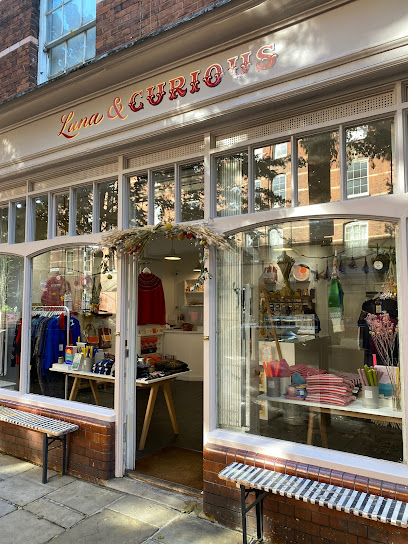
not just a shop
2.0 km
Discover unique gifts and artistic creations at Not Just a Shop, a charming gift store in central London that celebrates local artistry.

Essential bars & hidden hideouts
The Cocktail Club - Cocktail Bar near Monument
0.3 km
Discover a cocktail lover's paradise at The Cocktail Club near Monument, featuring innovative drinks and a lively atmosphere in the heart of London.

The Bootlegger
0.4 km
Experience the vibrant nightlife of London at The Bootlegger, a live music bar with exceptional cocktails and unforgettable performances.

Demon, Wise & Partners
0.5 km
Experience the best of London's cocktail culture at Demon, Wise & Partners, where innovative drinks meet a vibrant atmosphere.

The Alchemist Bevis Marks
0.8 km
Experience the magic of innovative cocktails and a vibrant atmosphere at The Alchemist Bevis Marks, London's premier cocktail bar.

Dirty Dicks
1.0 km
Experience the vibrant ambiance of Dirty Dicks Pub in London, where classic British hospitality meets a lively atmosphere and delicious cuisine.
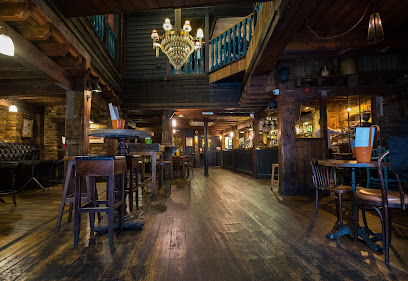
The Astronomer, EC1
1.0 km
Discover the inviting charm of The Astronomer Pub, a delightful blend of tradition and modernity in the heart of London.

Nine Lives
1.0 km
Experience the vibrant mix of handcrafted cocktails and authentic tacos at Nine Lives near London Bridge, the perfect spot for nightlife enthusiasts.

The Mayor of Scaredy Cat Town
1.1 km
Immerse yourself in the whimsical world of The Mayor of Scaredy Cat Town, a cocktail bar in London known for its quirky decor and creative drinks.

The Bell
1.1 km
Experience authentic British hospitality at The Bell, a traditional pub in the heart of London, serving delightful food and local ales.
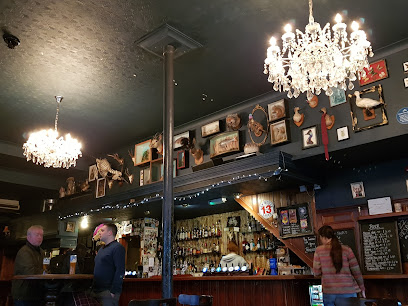
Black Parrot
1.1 km
Experience the art of cocktail crafting at the Black Parrot, London's premier cocktail bar known for its exquisite drinks and vibrant atmosphere.

Doggett's Coat and Badge
1.1 km
Discover the charm of Doggett's Coat and Badge, a historic pub on London's South Bank offering delicious cuisine and stunning river views.

Discount Suit Company
1.1 km
Discover the hidden charm of Discount Suit Company, a unique cocktail bar in London offering exquisite drinks and an unforgettable ambiance.

Aviary
1.2 km
Experience breathtaking views and exquisite cocktails at Aviary, London's ultimate sky-high bar.

Flight Club Shoreditch
1.2 km
Discover the perfect blend of darts, cocktails, and delicious food at Flight Club Shoreditch, London's premier social gaming venue.

Lyaness
1.2 km
Experience innovative cocktails and a stylish atmosphere at Lyaness, a premier cocktail bar in London along the scenic Thames.




